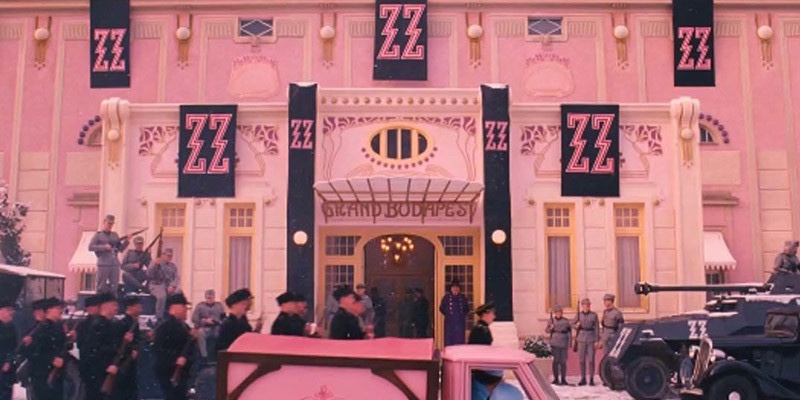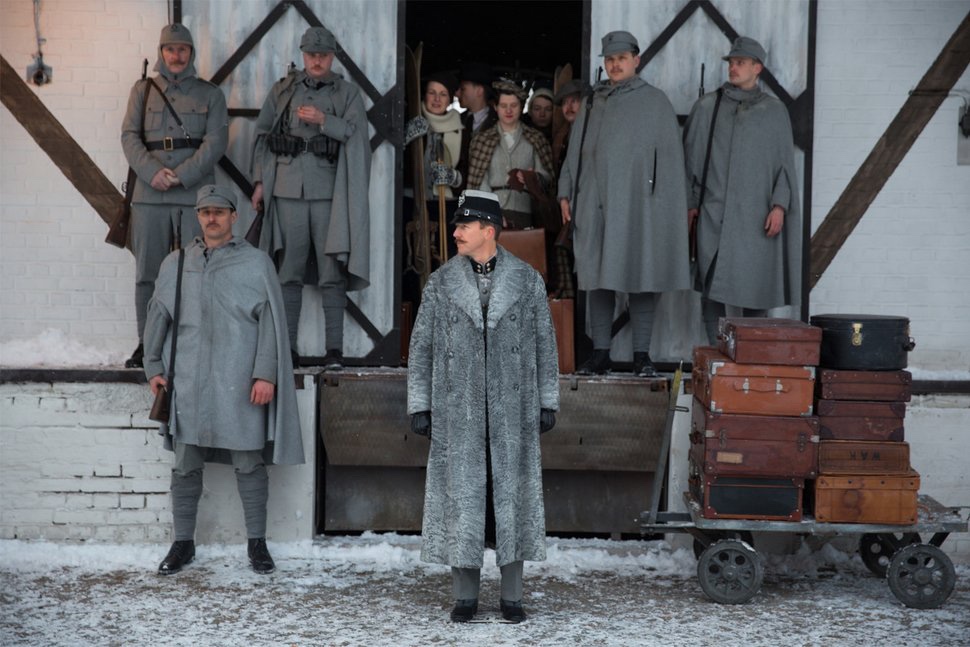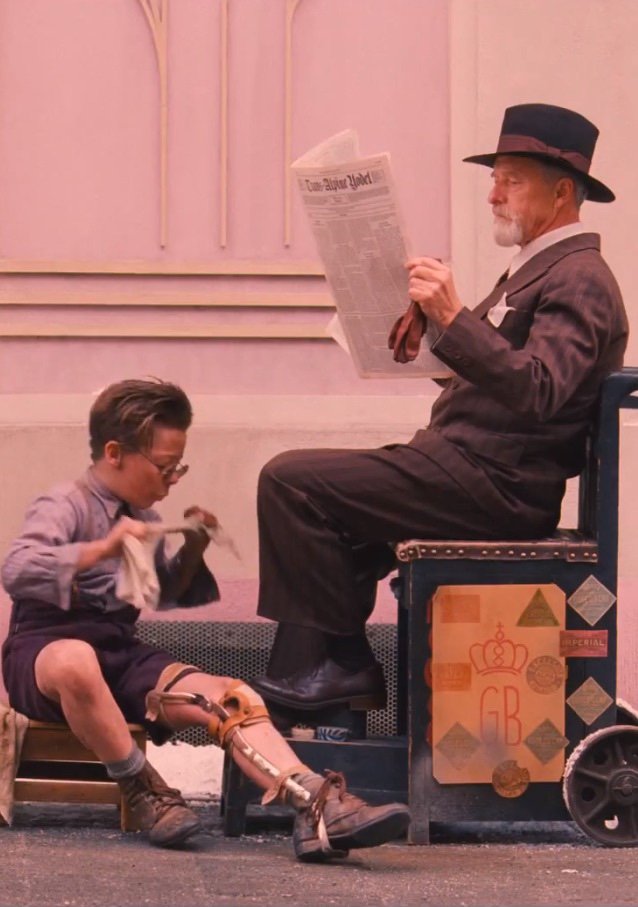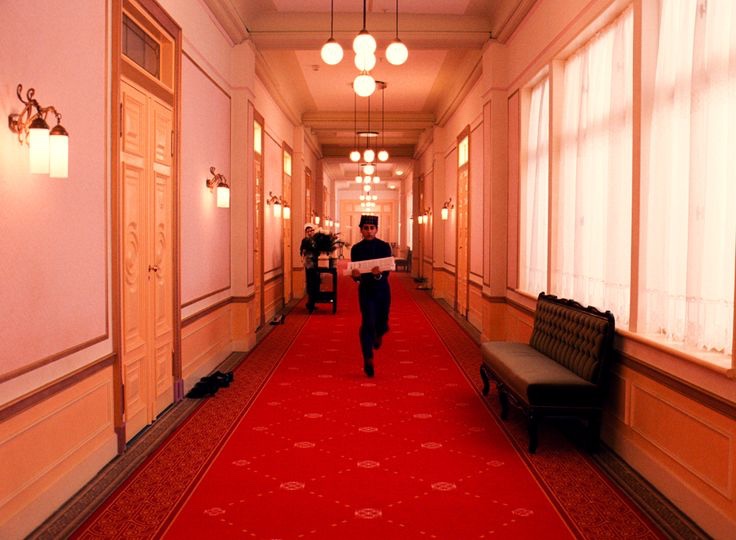Throughout the film, Wes Anderson chooses to represent a variety of groups in a particular way. For example, Anderson chooses to expose our cultural understanding of the Nazis in order to depict the prominent “ZZ” fascist group throughout the film.
Without explicitly telling us, everything we need to know about this group is implicitly hinted at through the use of mise-en-scène and performance. The homogeneity of the costume design reiterates the uniformity of the fascist group. Alongside this, the performances are extremely well-choreographed and synchronised to emphasise this.
The film frequently focuses our attention towards the familiarly designed “ZZ” insignia which is extremely reminiscent of the SS Nazi police force. Through this, Anderson manages to use the shared understanding of this symbol to his advantage in order to silently represent the prominent fascist group in this way.


Another example of representation reinforced throughout The Grand Budapest Hotel is the differentiation in class. The lavishness of the hotel’s interior as well as the opulence of the guests purport a sense of aristocracy. Conversely, the appearance of the crippled shoeshiner emphasises the harsh reality of the working class during this time period.

